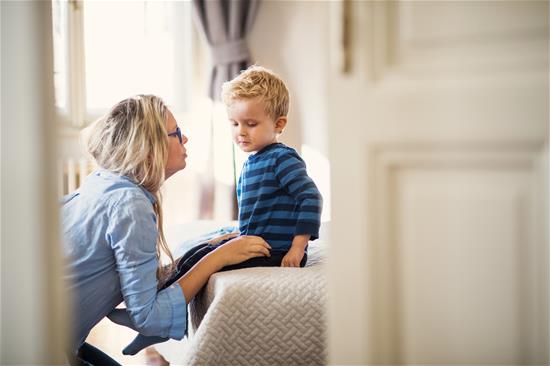- 855.224.8655
- Schedule a Tour
 While at the bookstore, you see your child take a toy away from another child. Your first instinct may be to grab the toy and say something like, “We don’t take toys from people. Now, say you’re sorry.” However, many early childhood educators suggest that forcing children to apologize, when they truly do not feel remorse, can have long-term negative consequences, and doesn’t actually solve the problem.
While at the bookstore, you see your child take a toy away from another child. Your first instinct may be to grab the toy and say something like, “We don’t take toys from people. Now, say you’re sorry.” However, many early childhood educators suggest that forcing children to apologize, when they truly do not feel remorse, can have long-term negative consequences, and doesn’t actually solve the problem.
As a parent, you want to teach your child to have good manners and to show empathy for others. While we can teach manners, empathy is something that can only be modeled and practiced, not taught.
Empathy requires the ability to understand what another person is feeling and experiencing. Young children are not developmentally ready to consistently be empathetic until they are about seven or eight years of age. Children can learn empathy by watching adults be empathetic and by practicing the art of listening to and understanding others.
Children who are forced to apologize can receive the message that simply saying, “I’m sorry,” fixes everything. An insincere apology does not teach empathy. If we want a sincere apology, we need to be patient and trust that our children will respond naturally over time.
While demanding that a child apologize may not teach the intended lesson of forgiveness and empathy, modeling the appropriate behavior will show your child the acceptable ways to apologize.
Here’s what that would look like:
While at the park, you see your child hit another child. Instead of forcing your child to apologize, focus your attention on the child who was hit. Apologize by saying, “I’m so sorry Liam hit you, hitting is not allowed in our house.” Then, take your child to the side to explain how the behavior was unacceptable. If your child seems remorseful, you can suggest an apology, or see if he would like to ask the other child what he can do to make him feel better. Ideas may include giving a hug, sharing a special toy, or getting an icepack. If your child says no, respect that he or she isn’t ready yet. The important thing in this situation is that you give your attention to the child who was hit and that you model what a genuine apology looks like.
Turn uncomfortable situations into teachable moments. With modeling and guidance, children can begin to see how conflict resolution is a process that leads to a repaired relationship between two people. Help your child understand by giving them the words for the emotions they are feeling and by giving alternatives to the undesired behavior. By doing this, you are providing the words your child will use to express their feelings instead of hitting.
“I see that you were angry when you hit your friend. Instead of hitting, you could tell him that you are angry because he took your toy. It is okay to feel angry, but it is not okay to hit.”
Forced apologies do not provide learning opportunities for your child. Allow your child space to try to respond in a sincere way to someone they have offended. It may not be an apology. Your child might pat the other child on the back, try to give them a hug, or offer a favorite toy. These compassionate gestures are apologies without using the words, “I’m sorry,” and are perfectly acceptable alternatives.
